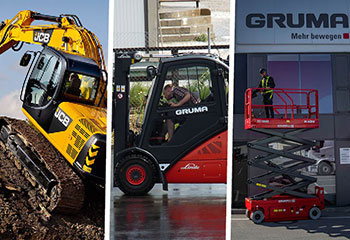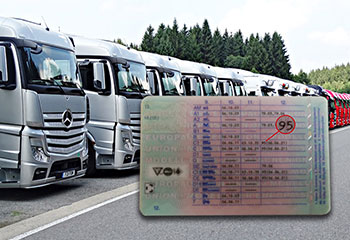Dangerous goods instruction (ADR 1.3)
Whether it's chemicals, gasoline or heating oil - whenever hazardous substances or objects (in short: dangerous goods) are moved on the road, the utmost caution is required. Otherwise, improper transport can lead to serious accidents. That is why it is important that, in addition to the drivers, all employees who have to deal with the dangerous goods (e.g. warehouse personnel) are adequately trained.
Our dangerous goods instruction in accordance with 1.3 ADR provides participants with knowledge of the correct labeling and handling of dangerous goods in addition to the current regulations. In addition, our training instructors explain possible dangers and risks as well as safety precautions and emergency measures.

Your advantages
Drinks, lunch and snacks included
Experienced and qualified trainers
Many practical examples to facilitate the implementation of the regulations in everyday life
All information on dangerous goods instruction

Legal basis
Every person whose field of work includes the transport of dangerous goods must be trained in accordance with Chapter 1.3 ADR (Section 8.2.3 ADR).
The abbreviation ADR stands for "Accord relatif au transport international des marchandises dangereuses par route" and means the Agreement concerning the International Carriage of Dangerous Goods by Road.
The guidelines are updated every two years to reflect the latest technical and legal findings and are legally valid in all member states by virtue of an EU regulation. Accordingly, employees' knowledge should also be regularly refreshed.
Who is the dangerous goods training aimed at?
The dangerous goods instruction according to ADR 1.3 is aimed at all employees of a company who transport dangerous goods or whose area of responsibility includes dangerous goods in road traffic.
This includes, for example, drivers of vehicles who do not require an ADR license because the maximum permissible total quantity per transport unit is not exceeded. Employees who are involved in the transport of dangerous goods or who are to take over this task in the future (shippers, packers, loaders) should also be instructed accordingly.


Contents of the dangerous goods instruction
Our instruction will teach you everything you need to know about transporting hazardous materials. This includes:
- General regulations (Dangerous Goods Transportation Act, GGVSEB/ADR)
- General hazard characteristics (hazard classes)
- Documentation (accompanying documents)
- Types of vehicles and transport
- Enclosures, personal protective equipment (PPE)
- Markings, labeling and orange warning signs
- Carrying out the transport (loading and unloading, etc.)
- Duties and responsibilities, sanctions
- Measures after accidents/incidents

We come to you: GRUMA Inhouse Training
You would like to train several employees in your company? We can also hold seminars on your premises on request. This allows our training managers to respond directly to the conditions on site.

Your service package: This is what you get with dangerous goods training
- Soft drinks and coffee for the entire duration of the training course
- Hot lunch
- Training materials
- Qualified and experienced trainers
- Certificate of attendance

Participation requirements dangerous goods training
- Minimum age 18 years
- Mental and physical fitness
- Command of the German language, both written and spoken
- Behavioral Characteristics: The person is expected to act responsibly, reliably, carefully and considerately
Frequently asked questions about dangerous goods training
As we only offer in-house training, the costs for the dangerous goods training are calculated individually depending on the group size, travel distance, etc.
For our dangerous goods instruction according to ADR 1.3 you should plan one seminar day.
There are nine different classes of dangerous goods:
- Explosive substances
- Gases and gaseous substances
- Flammable liquid substances
- Flammable, solid substances
- Flammable (oxidizing) substances
- Toxic substances
- Radioactive substances
- Corrosive substances
- Various dangerous substances and objects
No. Only drivers who transport a certain amount of dangerous goods have to take the ADR certificate. Our instruction is aimed at drivers who transport quantities below this limit as well as employees who deal with dangerous goods in their daily work.

Do you still have questions?
The staff at the GRUMA Academy will be happy to help you
GRUMA
Academy
Downloads
Training Program of the GRUMA Academy 2023
You might also be interested in

- The wide range of training courses offered by the GRUMA Academy: We train your employees in the handling of machines and in accordance with legal regulations.

- You would like to become a fire protection assistant? Complete your training now with our experienced trainers at the GRUMA Academy.

- We train your professional drivers in the modules eco-training, social regulations, driving safety, shift driver and load securing.

- Securing loads in accordance with regulations can prevent both accidents and economic damage, thus ensuring safety in operations.
